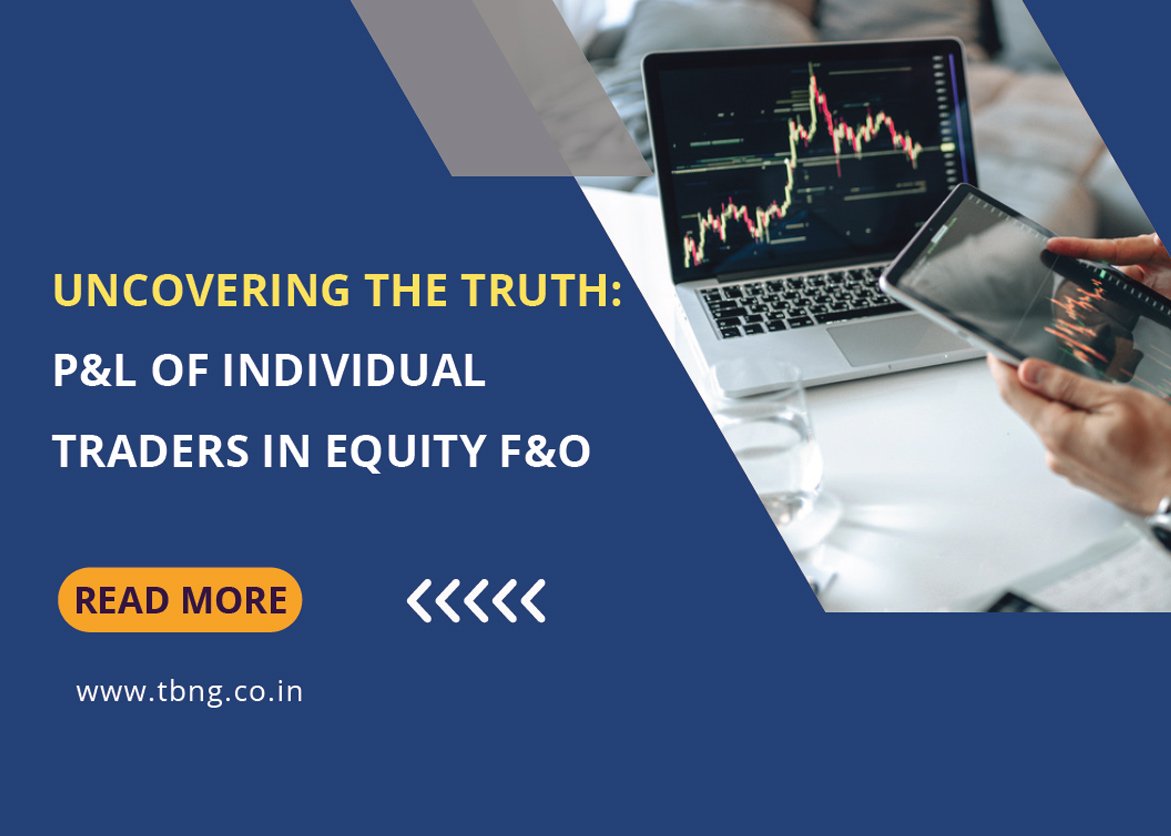The stock market is one of the world’s most volatile and unpredictable financial markets. In recent years, the equity futures and options (F&O) segment has gained significant popularity among individual traders due to its high liquidity and low entry barriers. In this segment, traders can buy or sell futures and options contracts based on underlying equity stocks. The number of F&O traders increased from 7.1 lahks (FY19) to 45.2 lahks (FY22). However, a recent study by SEBI on the P&L of individual traders in the F&O segment reveals the harsh reality of trading in this segment.
A recent research paper, titled Analysis of Profit and Loss of Individual Traders dealing in Equity F&O Segment, aimed to provide insights into the key factors that impact the P&L of individual traders in this segment. The study analyzed data from a sample of individual traders over one year and found the following key insights:
The study found that 89% of individual traders in the F&O segment made losses, with an average loss of Rs. 1.1 lakh during FY22. The figure was even higher for active traders, with 90% of active traders incurring average losses of Rs. 1.25 lakh during the same period. For the group of active traders (excluding outliers), on average, loss makers registered net trading loss close to Rs. 50,000 in FY22, with the average loss of a loss maker being over 15 times the average profit made by a profit maker during the same period.
On the other hand, 11% of individual traders in the F&O segment made profits, with an average profit of Rs. 1.5 lakh during FY22. The percentage went down marginally to 10% for active traders, but the average profit made by them went up to Rs. 1.9 lakh during the same period. However, for the group of active traders (excluding outliers), only 6% of individual traders made a profit, with an average profit of nearly Rs. 3,400 in FY22.
The study also highlighted the skewed distribution of profits in the F&O segment, with the top 1% and top 5% active profit makers accounting for nearly 51% and 75% of the total net profit earned by all active profit makers, respectively.
Despite its potential for high returns, trading in the F&O segment also carries a significant risk of loss. In order to make informed trading decisions, individual traders must understand the factors that impact their profit and loss (P&L) in this segment.
Here are some pointers to keep in mind:
Market volatility : Market volatility is one of the most important factors that impact the P&L of individual traders in the F&O segment. During periods of high market volatility, the prices of futures and options contracts are more likely to fluctuate, leading to greater potential for both profits and losses.
Trading strategy: A choice of trading strategy can significantly impact P&L. Traders who employ more speculative strategies, such as short-selling and leveraging, are more likely to experience higher volatility in their P&L compared to those who adopt a more conservative approach.
Position size: The size of a trader’s position in the F&O segment can also impact their P&L. Traders who hold larger positions are more exposed to market volatility and are, therefore, more likely to experience larger swings in their P&L.
Market knowledge: Traders with a deeper understanding of the market are better equipped to analyze market trends and make informed trading decisions are more likely to experience consistent and sustainable profits over the long term.
Risk management: Lastly, investors should be cautious of the significance of effective risk management in minimizing the effects of market volatility and lowering the possibility of losses. Traders who implement effective risk management strategies, such as setting stop-loss orders, are more likely to experience consistent profits and minimize the impact of market volatility on their P&L.
In conclusion, this research highlights the importance of considering a range of factors in determining the P&L of individual traders in the F&O segment. Market volatility, trading strategy, position size, market knowledge, and risk management are all crucial elements that traders must take into account in order to maximize their chances of success in this segment. By understanding the key drivers of P&L, individual traders can make more informed and effective trading decisions and achieve consistent and sustainable profits over the long term.
As an experienced financial advisor, I strongly recommend that HNI investors consider their long-term financial goals, market knowledge, risk tolerance, and the volatility of the market before making any investments, especially in the F&O segment. It is also essential to have a well-defined investment strategy, consider the position size, and regularly assess the P&L to ensure that the investment aligns with the desired outcomes.






